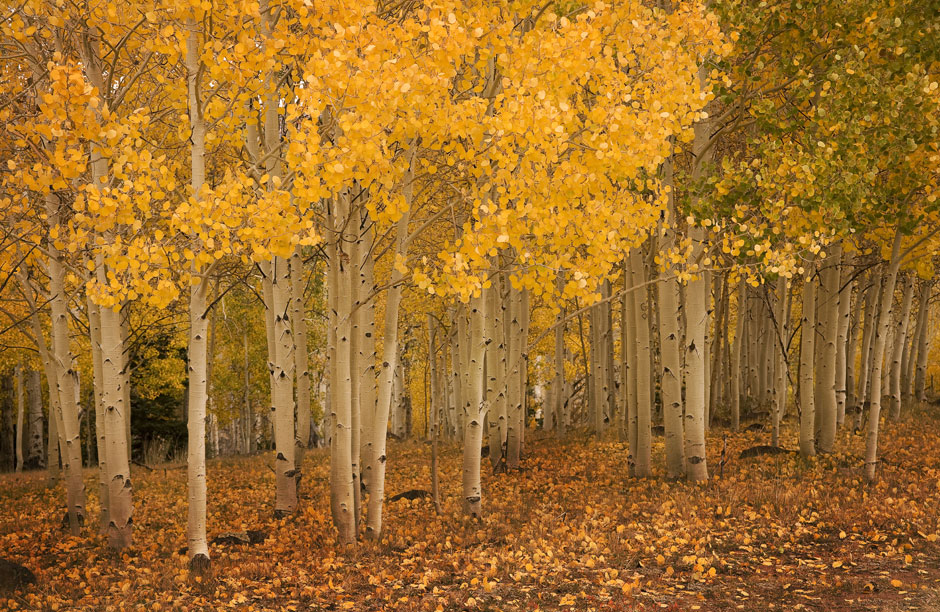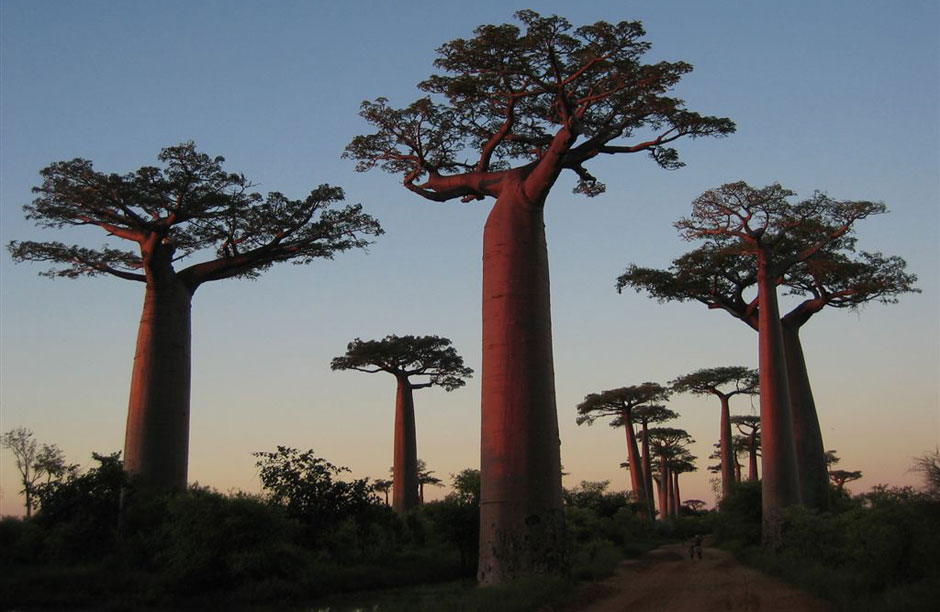PAST ISSUES
 The Bodhi Tree (below) at the Mahabodhi Temple in Bodh Gaya, India is believed to be a direct descendant of the Sacred fig tree under which Siddhartha Gautama (Buddha) attained enlightenment or bodhi. It is now a pilgrimage site and a gathering place for meditation and cultivating peace.
The Bodhi Tree (below) at the Mahabodhi Temple in Bodh Gaya, India is believed to be a direct descendant of the Sacred fig tree under which Siddhartha Gautama (Buddha) attained enlightenment or bodhi. It is now a pilgrimage site and a gathering place for meditation and cultivating peace. The Quaking Aspen Tree (Populus tremuloides) is a member of the poplar family, and thrives in high alpine conditions where the air is thin and the temperatures often dip below freezing. The largest living organism on the planet, as measured by weight, is a colony of Aspen trees nicknamed “Pando” or “The Trembling Giant”, which lives in Utah, and has been approximated at a weight of 6,615 tons and an age of 80,000 years old. An Aspen colony is created by a single parent tree that sends out shoots which spring up as clones of the original. In the fall when the Aspen leaves turn their signature golden yellow the clonal colonies turn at the same moment leaving large mountainside tracts awash in gold.
The Quaking Aspen Tree (Populus tremuloides) is a member of the poplar family, and thrives in high alpine conditions where the air is thin and the temperatures often dip below freezing. The largest living organism on the planet, as measured by weight, is a colony of Aspen trees nicknamed “Pando” or “The Trembling Giant”, which lives in Utah, and has been approximated at a weight of 6,615 tons and an age of 80,000 years old. An Aspen colony is created by a single parent tree that sends out shoots which spring up as clones of the original. In the fall when the Aspen leaves turn their signature golden yellow the clonal colonies turn at the same moment leaving large mountainside tracts awash in gold. Baobab Tree (Adonsonia grandidieri) is a sacred tree in Africa. Some tribes have buried their leaders within their hollow barks. According to an ancient legend, “...the devil plucked up the Baobab, thrust its branches into the earth and left its root into the air.” 2 species of Baobabs are among the 10 most endangered trees in the world. photo by Daniel Montesinos at the “Avenue of the Baobabs” in Madagascar.
Baobab Tree (Adonsonia grandidieri) is a sacred tree in Africa. Some tribes have buried their leaders within their hollow barks. According to an ancient legend, “...the devil plucked up the Baobab, thrust its branches into the earth and left its root into the air.” 2 species of Baobabs are among the 10 most endangered trees in the world. photo by Daniel Montesinos at the “Avenue of the Baobabs” in Madagascar.
The Seed of Breath
By Jessica Schweifel-MahaneyAs a human being, I have always sensed my connection to the natural world. From an early age I knew that when my knees hurt it meant rain was coming, or that when the autumn sky stirred with flocks of feathered friends, it meant Miami’s so-called winter was setting in. I grew up in Miami, Florida, surrounded on 3 sides not only by the mighty ocean, but also by woody, swampy, and tropical vegetation. Nature has always spoken to me and through me. I often look to the birds, the squirrels, the clouds, and the moon to teach me things like patience, or to remind me to surrender to life’s rhythms. But of all nature’s creations, it is the dignified tree that holds its wisdom deep inside its yearly, layered rings. And our relationship to this ancient being may bring us as close to the ethereal mother as any Earthling might ever be.
Humans and trees have a profound symbiotic relationship. It’s as though there is an invisible umbilical cord linking our beating pulse, the effortless ins and outs of our human lungs, to the veins on the leaves of the trees. In fact, tree leaves act as little lungs for the atmosphere by soaking in all of our imperceptible waste. As we inhale oxygen and exhale carbon dioxide, trees inhale our carbon dioxide and exhale oxygen. This relational reciprocity is somewhat unquantifiable. In a purely human dynamic such a friendship would likely warrant a deep mutual respect and appreciation, but when it comes to a member of the plant kingdom perhaps it’s easier for us to take “the giving tree” for granted. Biologically speaking, we could not survive on Earth if it weren’t for the trees as they are largely responsible for creating and maintaining Earth’s atmosphere.
A great deal of research by the USDA Forest Service has shown how trees (including those of the urban forest) reduce pollution in several ways. Instead of contaminates being absorbed into the atmosphere, or trickling into our water systems, trees are inhaling them through their leaves and sucking them up with their roots. By storing certain pollutants in their wood, and transforming pollutants like carbon dioxide into pure oxygen, trees are functioning as the best global air filter we will ever know. Unfortunately, our air faces substances that are even more threatening than carbon dioxide. We are also up against carbon monoxide, ozone, and particulate matter such as microscopic soot, diesel exhaust, chemicals, metals and aerosols, all of which are very harmful to our health, and the health of all living organisms. To be accurate, carbon dioxide does not directly weaken human health, but as a greenhouse gas it traps the earth’s heat and contributes to global warming.
To be honest, I don’t think i ever really appreciated or thought about clean air until I began meditating. Meditation is basically the practice of breathing, bringing conscious awareness to our breath. Though we are obviously breathing all the time, it wasn’t until I stopped and attempted to focus on nothing but my breath that I really began to understand its power. In this focused state, you can easily feel the atmospheric shift between the air at my home in Brooklyn versus the air in the mountains, or in the surrounding NY State forests. When I sit silently, sensing the rise and fall of my chest, or the subtle tickle of air beneath my nose, I cannot help but contemplate what the process of breathing requires on a biophysical level. Breathing oxygen not only acts as the foundation for our basic survival, but it can also improve our health and vitality. Conscious deep breathing has been scientifically proven to improve blood circulation and lower stress and blood pressure. Poor air quality is the culprit behind many modern illnesses, from respiratory to cardiac conditions, but conscious breath work alone is the antidote to many stress related illnesses. People suffering from autoimmune disorders and diseases, and illnesses ranging from high cholesterol to cancer, are now being referred, by their Western medical doctors, to meditation as a prescribed treatment. The quality of our air is a matter of life and death.
The NYC Urban Forest Census of 2005, Trees Count, shows that 272 tons- 40 adult elephants- of air pollution are intercepted or absorbed by NYC trees annually. Yet even when you know how hard trees are working it’s still difficult to grasp their true value. Regardless of the calculations- money and energy saved or pollution absorbed annually, clean air and oxygen is clearly the measure of life. Therefore, if we value life then we must deeply value trees.
Now go, find a tree, hug it, and thank it dearly.